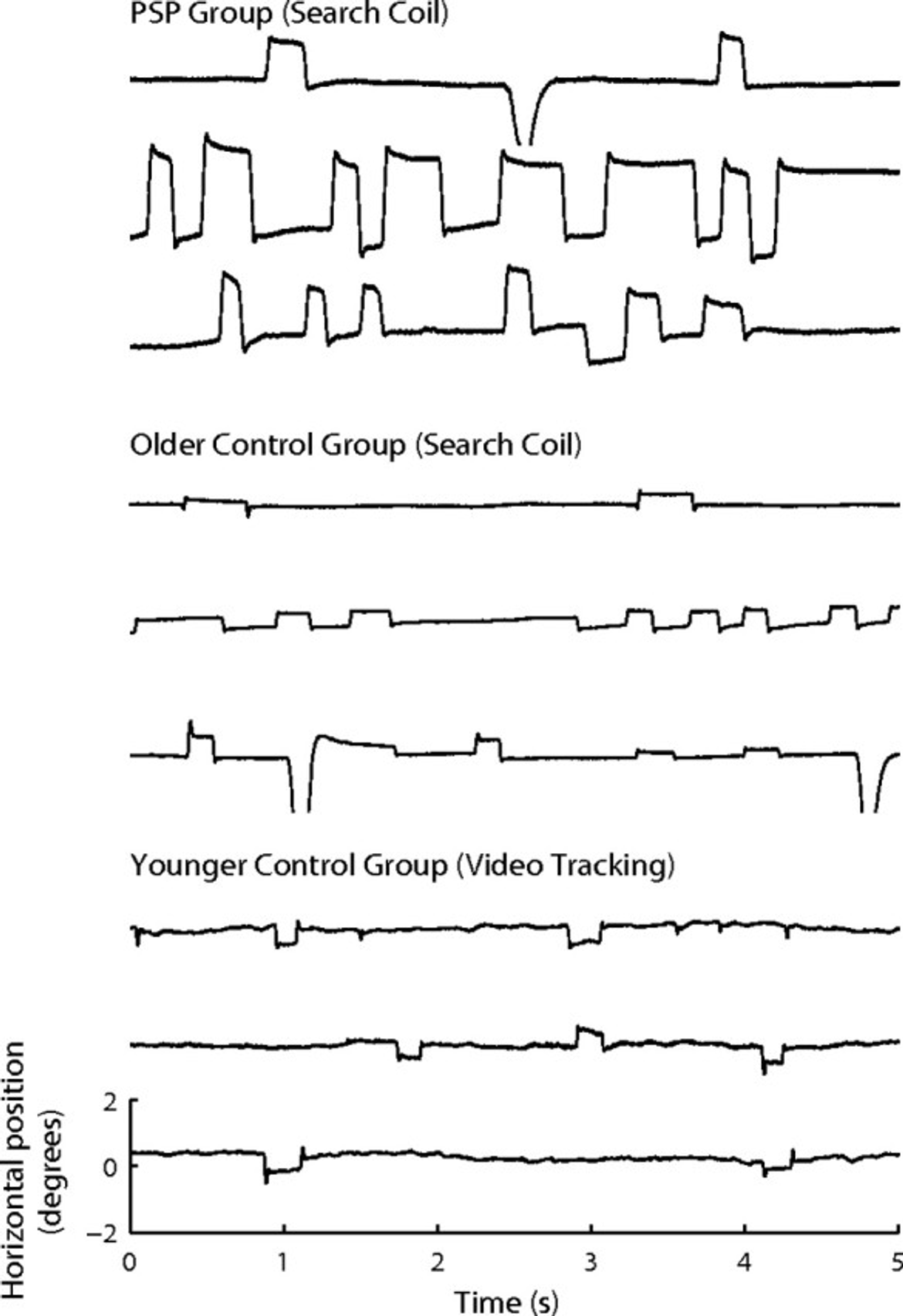
//
Distinctive features of saccadic intrusions and microsaccades in progressive supranuclear palsy.
Search
Try Notion
Distinctive features of saccadic intrusions and microsaccades in progressive supranuclear palsy.
Authors text
Otero-Millan, Jorge, Serra, Alessandro, Leigh, R John, Troncoso, Xoana G, Macknik, Stephen L, Martinez-Conde, Susana
Journal/Book
J Neuroscience
Year
2011
Abstract
The eyes do not stay perfectly still during attempted fixation; fixational eye movements and saccadic intrusions (SIs) continuously change the position of gaze. The most common type of SI, square-wave jerks (SWJs), consists of saccade pairs that appear purely horizontal on clinical inspection: the first saccade moves the eye away from the fixation target, and after a short interval, the second saccade brings it back toward the target. SWJs are prevalent in certain neurological disorders, including progressive supranuclear palsy (PSP). Here, we developed an objective method to identify SWJs. We found that SWJs are more frequent, larger, and more markedly horizontal in PSP patients than in healthy human subjects. Furthermore, the loss of a vertical component in fixational saccades and SWJs was the eye movement feature that best distinguished PSP patients from controls. We moreover determined that, in PSP patients and controls, the larger the saccade the more likely it was part of a SWJ. Furthermore, saccades produced by PSP patients had equivalent properties whether they were part of a SWJ or not, suggesting that normal fixational saccades (microsaccades) are rare in PSP. We propose that fixational saccades and SIs are generated by the same neural circuit and that, both in PSP patients and in controls, SWJs result from a coupling mechanism that generates a second corrective saccade shortly after a large fixation saccade. Because of brainstem and/or cerebellum impairment, fixational saccades in PSP are abnormally large and thus more likely to trigger a corrective saccade, giving rise to SWJs.
Citation
J Neurosci. 2011 Mar 23;31(12):4379-87.
Broad Topic
Diagnosis
Ocular motor control